| 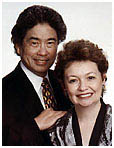 Effective
Teaching...
Effective
Teaching...
by Harry and Rosemary
Wong
November
2005
The Emergency
Teacher
Several years ago we
received an unsolicited manuscript from Christina Asquith that
had us transfixed. It was about her year of teaching
in the Philadelphia Public Schools. Her writing style and
the subject had us riveted on her every word.
Since we have a publishing company, we quite often get
requests from teachers wondering if we would publish their materials.
Regretfully, we declined because we publish only our own work
and we hated to disappoint Christina.
However, through the years we have remained friends with her.
Go to www.educationnews.org
and under the list of columnists in the left margin, click on
Christina Asquith and you will understand why we have remained
in contact with her through the years. As a correspondent
from Iraq, she covered the war, befriended Iraqi women, and got
involved in the fight for women’s rights in the Middle East.
In fact, while she was in Iraq, we sent her copies of The
First Days of School to distribute to educators
who were patching the schools back together.
Two Questions to Answer
But, back to the manuscript she submitted to us! The book
was about Christina leaving her job with The Philadelphia
Inquirer and going into the classroom to teach. She
aspired to “make a difference in a child’s life,”
or so promised the School District of Philadelphia’s marketing
brochure.
Without certification or training—an “emergency
teacher”—Christina is hired on the spot and
(unknowingly) assigned to the classroom that few veteran teachers
would take—sixth grade in the city’s oldest school
building, in a crime-infested neighborhood known as The Badlands.
“Sink or swim,” Christina is told on her first day!
Being the good journalist that she is, she promises herself on
the first day of school to answer the two classic questions:
Why are American
inner-city public schools failing?
Can one young, motivated person make a difference?
To get a glimpse of Christina’s answers to those questions,
read from an article she wrote with us for school board members—those
people who determine policy and have the power to change schools.
Christina wrote in the article:
On
many days I truly loved teaching, but my lack of experience made
the bad days too terrible for everyone involved. Overwhelmingly,
I felt guilty, confused, and hopeless about the experience.
Yet, in the back of my mind, I wondered if I hadn’t been
thrown in cold, if I had had some training, any training—some
support, could my brief career in teaching have turned out differently?
New
teachers are always excited and nervous for the first day of school,
and I was no exception. At 26 years old, I had a college
degree, a background in journalism, and dreams of teaching English
to a classroom of low-income children. In Philadelphia,
a recruiting campaign pushed the idea that we could make a difference,
and the city’s $1,500 hiring bonus sweetened the offer.
In September of 1999, I began my second career as one of the city’s
1,200 new teachers. We were all filled with hope.
Right
away, the troubles started. The district assigned me to
a middle school—the least desirable age group—and
I unknowingly selected one of the most challenging schools in
Philadelphia. I received one day of orientation, during
which I mostly filled out forms. No one officially welcomed
me or the other three new teachers to my school; in fact the veterans
received us with skepticism, at best. Apparently, I was
assigned a mentor, but she was busy with her own classroom.
I’ll never forget the first morning when a student asked
me for a pass to the bathroom and I didn’t know where it
was. I have heard administrators describe a new teacher’s
first year as a ‘sink or swim’ experience. I
began to sink.
At
the end of September, the newspapers reported that 100 of Philadelphia’s
newly recruited teachers had already quit. Throughout the
year, six teachers in my school walked off the job, and I fought
the temptation to join them. Isolated in my classroom with
few supplies, no experience and nowhere to turn for help, I struggled
to control students. When the $1,500 bonus arrived, it meant
little to me—as I would have paid twice that to succeed.
While
I had it tough, the loss was greatest for my 6th graders, almost
all of who failed the state writing tests in the spring.
It was seeing their disappointed faces each day that pushed me
out the door in June.
The rest of this article, written for the American School
Board Journal, can be seen by going to www.NewTeacher.com
and clicking on Dec 16, 2002, "Assessing
and Supporting New Teachers."
Christina’s First Day of School
Many teachers can relate to Christina’s situation
as a brand new, first year teacher. The rest of
the story of her experience teaching in the Philadelphia schools
can be found in Christina’s just released book, The
Emergency Teacher, (www.TheEmergencyTeacher.com).
Yes, she found a publisher and she has graciously allowed us to
share with you an excerpt from the book.
From The Emergency Teacher, Chapter
1:
They’ll Take Anyone
That could not be a school.
A weather-beaten gray-stone edifice glared down at me as I stood
on the corner of Eighth and Lehigh in North Philadelphia.
The building looked like a prison. No, a dungeon.
The roof had four turrets with menacing gargoyles arched forward.
Surrounding the massive building was a cracked concrete parking
lot ringed by a black iron gate. Empty, rotting factories
loomed in the distance. It was hard to believe any parent
would send children here. I parked in a pothole and walked
up the steps.
I
yanked open the only door that wasn’t chained shut and saw
a little placard with the words MAIN OFFICE, down the hall.
I walked quickly towards it. A woman behind the counter
shuffled through papers. She glanced up over the glasses
perched on her nose.
“Hi,
my name is Christina Asquith,” I said. “I’d
like to teach here.”
The
city of Philadelphia still had fifteen hundred teacher vacancies—more
than 10 percent of the teaching staff. The district was
desperate to hire anyone, or they’d have thousands of kids
without a teacher that September. I was a 25 year old journalist,
and had recently finished a two-year internship with The Philadelphia
Inquirer. I ought to have been looking for a job in
journalism, but the other day I had come across an advertisement
at the bus stop: “Change a Life. Be a Teacher.”
The ad showed a sweet young boy gazing longingly for a teacher.
Although
I’d worked for newspapers since college, I had felt frustrated
with newspapers as of late. I wanted to make a difference,
particularly by covering urban school systems, but from the distant
perch of the newsroom, I felt out of touch with the real problems
inside the classroom. Teaching was always something I had
a passion for, but I didn’t want to go back to school for
years to get an education degree. Apparently, I didn’t
have to.
The
woman behind the counter was Mrs. Jimenez, the assistant principal.
She looked sophisticated in gold jewelry and pinned up hair.
She was friendly and offered to give me a tour. Gliding
along the wooden floors, she told me she had taught here for a
decade, but that the school was much older than that.
“The
school used to be called the Northeast Manual Training Center,
but they renamed it twice, and now it’s called Julia de
Burgos Bilingual Middle Magnet School, after the Puerto Rican
poet,” she said.
The
school was old, but strangely beautiful. A dimly lit staircase
led up to an antique stained-glass window that filled the archway
with the colored light of a church. The wooden floors creaked.
As we moved along them, I took in all the trappings of a public
middle school: the trophy case, the library, the halls of lockers,
the white Halsey Taylor water fountains, the nurse’s office,
and the science labs. The school hallways formed a square,
with a courtyard in the middle and three sets of staircases leading
from the basement to the third floor. Years had passed since
I’d stood in the long, shiny hallways of a school, and I
was flooded with memories of my own private school in Northern
New Jersey. My favorite teachers: the reading teacher Miss
Mercer, who taught us to love Shakespeare, J. D. Salinger and
F. Scott Fitzgerald; and the math teacher Mr. Senn, with the great
stickers, and Math Quiz Mondays. I saw myself marching to
class wearing an oversized Benneton sweater, a Swatch watch, and
purple jeans tucked into thick white socks, carrying a thick binder
divided up neatly into all the subjects. Middle school was
this golden period, before the complications of high school, when
life was about playing tennis in the Fall and going to clarinet
practice in the Winter and acting in the school play in the Spring,
while my parents watched from the audience. How exciting
to step back in time like this, and become the teacher!
Around me, I saw a few other teachers shuffling beyond open classroom
doors, dusting off the desks and applying fresh paint—setting
up the theater for the grand performance, for which I was auditioning.
The thought sent chills down my body.
Mrs.
Jimenez smiled at me warmly, as if she really wanted me to teach
here. And she didn’t seem shocked when I told her
I had never taught before. “Mmmm, yes. Well,
we really need teachers,” she replied simply. Even
though the school needed some serious renovation, I saw that the
teachers and students had painted pretty murals of Puerto Rico,
and hung signs of school pride that gave it a sense of spirit.
This
was how I imagined an urban school. This would be tough,
but if I were going to do this, I didn’t want a school that
anyone would teach at. I wanted the kids that no one else
would take. When Mrs. Jimenez offered to write a letter
requesting I be assigned here, giddiness overwhelmed me and I
engulfed her in a warm hug. “I’ll be the best
new teacher, I promise.” She looked slightly surprised.
“Can
I really teach without any experience?” I asked Eppy, the
recruiter for the Philadelphia School District. Most teachers
were required to graduate from a college program and log at least
forty hours in the classroom training alongside a real teacher.
Eppy
waved my comments away. It wasn’t necessary.
“Believe me, we need you more than you need us,” he
said.
I
had no direct experience in the classrooms, but had always dreamed
of being a teacher. My first year at Boston University I
had taken several education classes. Eventually, though,
I’d switched to journalism because the classroom seemed
too confining at such a young age. I wanted to go out and
learn about the world first, and journalism was a vehicle to travel,
meet new people and explore different subjects. Immediately
after college, I moved to Chile for one year to write for a newspaper.
Upon my return, I was accepted into The Philadelphia Inquirer’s
two-year internship program. While there, I always kept
a foot in the education world. For two years, I volunteered
in the Big Brother Big Sister program of Philadelphia and also
for the Salvation Army Boys and Girls Club. At the Inquirer,
I had gravitated to education, and written dozens of stories about
testing, school life and teachers programs. Eppy didn’t
seem too interested in my experience, or lack thereof.
“The
real need is in the middle schools,” he was saying.
“I was a middle school teacher.” Eppy was overly friendly,
like a salesman. He never stopped grinning and looking relaxed,
even as he constantly interrupted our meeting to take phone calls
that always seemed to involve an emergency.
“Really?
OK.” I thought I would be better in high school, teaching
maybe English, science, or history. I was imagining the
famous teacher-movies: Stand and Deliver, Dangerous
Minds and Lean on Me. But I trusted him, and
we spent about two hours together on that first day. By
the end he had convinced me to take middle school. Philadelphia
had only a handful of Spanish/English bilingual middle schools,
so that narrowed the choice to Julia de Burgos and a few others.
He gave me a stack of application forms. He warned me to
hurry because it was already July.
“It’s
not the eleventh hour, Christina. It’s quarter to twelve.”
Immediately,
I had a million things to get: a criminal-record check, a child-abuse
check, a doctor’s physical. And I needed to enroll
in a certification program at a university. I was excited.
After years writing about education, interviewing principals,
reading about the troubles of urban schools, and pleading to see
a real classroom in action, I’d finally be on the inside
and able to uncover how schools really work.
Journalism
could wait. For years I’d been covering the suburbs,
school boards and sewer projects. At 25, I was full of determination
to change the world and make a difference, and inner city schools
seemed like the perfect place for me. A year as an inner-city
teacher would be a challenge, and a chance to help children in
need and find answers to my questions, such as: why were inner
city schools failing? I’d find the solutions.
Maybe I’d write about it afterward. But I’d
worry about that part later. I hadn’t been in middle
school in more than a decade. I didn’t even know any
twelve-year-olds. The school district wasn’t really
going to let me do this . . . were they?
It
may seem unbelievable that someone could simply walk off the street
and into the classroom, but in Philadelphia and many urban districts,
this was exactly what was happening.
The
thriving economy of the late 1990s drew potential teachers and
college graduates into other, higher-paying jobs. This occurred
just as birth patterns gave rise to a massive increase in student
enrollment. At the same time, an aging workforce meant that
scores of teachers were retiring. This perfect storm in
the education-employment world led to one of the periods of greatest
demand for new teachers in thirty years. An estimated 7
million new teachers would have to be hired between 1997 and 2007,
and the need would continue to increase until 2013, according
to the U. S. Department of Education.
To
meet demand, schools hired “emergency-certified” or
“alternative-certified people.” These were candidates
who didn’t have a university degree from a college of education;
neither did they have a major in the field in which they planned
to teach, such as chemistry, math, or English. They also
didn’t have to take any state or school-district teacher
exams. In the case of Philadelphia, all teachers typically
had to take the Praxis exam, designed by the Educational Testing
Service. It’s a basic battery of tests to assess prospective
teachers’ basic knowledge of math, reading, and writing.
Emergency-certified teachers would not have to take that test
until after three years on the job.
At
the turn of the century, forty-five states, and Washington D.
C., allowed for emergency-certified teachers, and their ranks
were growing. In Texas, one in four new teachers was emergency
certified. In Detroit—the city with the greatest numbers—one
in three teachers was uncertified. In rural and poor inner-city
schools, their numbers are even greater.
Many
people opposed the idea of emergency certification, pointing out
that the equivalent in medicine would be to solve a hospital’s
doctor shortage by doing away with medical school and board examinations,
and simply telling anyone who wanted to be a doctor to “train
on the job.” No patient would want to go to an emergency
certified doctor.
But
others said that loosening standards allowed people to change
careers and go into teaching, without having to go back to school
for three years. In these instances, schools benefited from
diversifying their teaching ranks with successful professionals,
such as scientists, mathematicians, entrepreneurs, and writers.
One popular national program, Troops to Teachers, gave former
military commanders emergency certifications to become teachers
and eventually school leaders. Teach for America was another
popular national program that recruited college graduates, placed
them in underprivileged school districts for two years, assisted
them in getting their emergency certifications, and ran training
courses. It also acted as a support for new teachers in
their first year.
These
programs gave between one to six weeks of summer training, but
new teachers like me, who applied directly to the school district,
often received less. I would receive only a few days.
Supposedly that was enough to take on a classroom of the city’s
toughest-to-teach children.
Years
later, a Philadelphia think tank found otherwise. When Philadelphia’s
emergency-certified teachers finally did take the basic licensure
tests—the Praxis exam—the think tank uncovered: “less
than half of the emergency-certified teachers passed the basic
mathematics test.” Only two-thirds passed the reading.
Only 60 percent passed the writing.
“Their
inexperience makes classroom management a problem,” stated
the report titled “Once and for All” by the ‘Learning
from Philadelphia’s School Reform Project. In math,
science, and bilingual classrooms—the areas that were the
hardest to find teachers for—half of all new teachers were
uncertified. This meant a child in Philadelphia’s
public schools had less than a 50 percent chance of getting a
math teacher who could do basic math.
The
report concluded: “The data makes clear that students in
Philadelphia have not been able to count on getting a teacher
who has mastered basic academic skills.”
As
the summer drew to a close, the Philadelphia schools still needed
to recruit hundreds of warm bodies. It offered $1,500 sign-up
bonuses. A few hundred more signed on, and a couple hundred
additional bodies joined in September and October. Like
me, they would be too late for the one-week induction seminar,
so they received no training at all. I didn’t want
to imagine the kind of unqualified, uninterested teacher who would
take the job at the last minute just for the sign-on bonus.
By
the time school started, more than eleven hundred random people—one
in ten teachers—had wandered off the street and been handed
classroom keys. They were directed to the most troubled
schools, and when September started they stood in front of their
classrooms. They had no educational experience, no guidance,
no instruction and scant support. Like me, many had no clue
how to teach.
Pete,
my boyfriend, took on the task of training me to be a teacher.
He was, at that moment, the only person really behind the idea.
Years earlier, before entering medical school, Pete had spent
a year teaching in a New York City public school. Tall,
handsome, outdoorsy, Pete was the perfect boyfriend, and also
a good friend. Although, he had some bizarre advice:
“Just
remember, you’re in charge. The most important thing
is discipline,” he said. “You gotta seat‘em
first, then teach them.”
“Ok,”
I said. “No problem.”
We
had spent the morning researching the school district through
back issues of The Philadelphia Inquirer and found out
that Philadelphia was then the fifth-largest public school district
in the nation, with 210,247 students, twelve thousand teachers,
more than two hundred schools, a $1.6 billion annual budget, and
a very frightening $80 million deficit. Like most big urban
areas, the school system had turned abysmal in the 1970s—correlating
with the disappearance of big industry and white flight to the
suburbs—and hasn’t turned around since. These
days, 78 percent of eleventh-graders couldn’t even complete
basic-level work in any major subject, according to scores on
the SAT-9, the city’s standardized test.
City
officials had been trying for decades—without success—to
turn the system around. The latest trend strove to make
schools run like businesses, an approach that was gaining in popularity
in urban districts across the country. In the spring of
my year teaching, the school board fired its school superintendent,
David Hornbeck, and replaced him with a chief executive officer.
Plans were afoot to turn dozens of schools over to for-profit
companies. Voucher programs, in which children use public
money to attend private schools, were also being pushed by the
governor’s office. So were teacher-accountability
measures and teacher recruitment.
Missing
from this list were proposals to improve teacher training.
I
stretched out on the warm, well-manicured, summer grass of Rittenhouse
Square, sipping from my latte, fanning out the teacher training
workbooks we had splurged on in Barnes and Noble. While
I waited for Eppy to process my application I devoted all of July
to training myself how to be a teacher. I read The First
Days of School, by Harry and Rosemary Wong. Rather
than comfort me, it opened my eyes to how much I didn’t
know. What was a lesson plan? How did I decorate a
classroom? How did I discipline a child? How would
I get parents involved?
I
pored over teaching books that explained concepts like name charts,
pencil-sharpening procedures, and positive reinforcement. I learned
all kinds of new details about preteens that I had long forgotten,
such as the most important thing a child wants on the first day
is security. Transition frightens them, and teachers should
explain every small detail, such as how to pronounce the teacher’s
name and classroom locations and schedules.
I
scribbled down tips for myself: “Don’t mark X
on the answers that are wrong, just mark C on the answers
that are correct.” “Never, ever raise your voice.”
“Teach a new vocabulary word each day, and call it, ‘Word
of the Day.’” The most important thing was to “plan
and plan extra.”
Behind
dark sunglasses, my eyes closed and my mind wandered as Pete was
reading aloud from a teacher training manual. Thoughts of
teaching filled my head, and I reveled in the sense of purpose
and meaning that came from helping others. A smile spread
across my face as I dreamed of having my own gradebook, and my
own quizzes and students reading aloud and calling me Ms. Asquith.
This was a major life change, and yet I was counting the days
until September.
“Never
kick a student out of class to be disciplined,” Pete said,
interrupting my reverie. “That sends the message that
you aren’t the authority. Handle all your own discipline.”
He
told me not to smile until Thanksgiving, either. “There
are two different types of teachers—the ruler-cracker and
loving pushover. Who are you going to be?” He explained
that, in his school, the female teacher across the hall from him
was soft and fuzzy, and won over the kids with warmth. Her
class was always chaotic, but the students covered her desk with
gifts at Christmas. They listened because they loved her.
Pete
was the opposite, a real “hard-ass” teacher who demanded
quiet and didn’t let the kids get away with anything.
When a fight broke out in the hallway one morning, he’d
jumped in and put a red-faced boy in a headlock, pushing the kid’s
chin into the floor. The rest of the students saw this and
knew not to mess with him. He never let the slightest infraction
slide. That may sound harsh, he said, but these kids craved
borders. My strictness would pay off, and I’d be glad,
he promised. For example, he recalled a day in the spring
when he conducted a physics experiment. He was able to leave
half his class—unattended—while he and several other
students went to another floor to study velocity. His students
behaved. Other teachers saw this and marveled at his control.
“Watch out for the cynical veterans. They will try
to drag you down with them.” When he reminisced about
teaching, he grew nostalgic.
“This
will be the best thing you’ve ever done,” he said,
giving me a hug.
Then
he gave me a piece of advice.
“Never
enter a showdown you can’t win,” he said.
“A
showdown?” I asked.
He
nodded. That night he demonstrated a judo move in which I was
to grab his wrist, wrap it around in a circular orbit, and grip
him in a headlock. This could nail someone in three seconds,
regardless of weight. I tried it a few times, but it didn’t
really work when I did it.
“Just
in case,” Pete said.
This
made me wonder what the students would be like. Were they
dangerous? Would they wear leather jackets? Were they
the kind of kids with hard exterior shells, but crack them a little
and they were hidden geniuses. What would they think of
me?
Finally,
I had to tell my family. They were less supportive.
“Are
you crazy?” said Jon, my brother, a twenty-seven year old
stock broker who lived in a mini-mansion in the New York suburbs.
“Don’t you know what happened to Jonathan Levin?
Is that what you want to happen to you?” he asked.
Jonathan
Levin was the wealthy son of then Time Warner Chair Gerald Levin.
He had eschewed his family fortune and fame to become a beloved
English teacher in an underprivileged school in the Bronx, and
he paid the ultimate price for it. In 1997, two of his students
arrived high on drugs at his Upper West Side Manhattan apartment,
robbed him, and shot him to death.
“That’s
not going to happen,” I said uncertainly.
“Why
do you have to do that? Do what your friends are doing,”
he said.
Most
of my friends were setting off for well-paying jobs with Internet
start-ups or glamorous new magazines or in bureaus of The
Wall Street Journal or The New York Times.
Why didn’t I want to do that too? I didn’t know.
I wanted to “make a difference in a child’s life,”
as the Philadelphia Department of Education recruitment posters
promised. I felt like the failing inner city schools were
an injustice that I should stand against, not only with words
but with real action. Especially these days, as the economy
boomed and people in their 20s were becoming Internet millionaires
overnight. In the newspaper the other day, I read that some
rich Wall Street guy rang up a $200,000 tab at a restaurant and
left the waiter a $40,000 tip. Yet, in the same city there
were children who lacked textbooks. Something was wrong
with this. Once inside the schools, I would understand the
problems and then find solutions. I could take those solutions
to politicians and make a change in schools across the nation.
“Go
into advertising, real estate, finance,” Jon was saying.
“You’re crazy. It’s the ghetto. It’s
dangerous.”
I
didn’t say anything. I couldn’t articulate my
beliefs, but I knew I had to finally find answers to the questions
that had burned in my brain for years: Why were inner city schools
failing? Why didn’t anyone do anything to improve
them? I couldn’t stand up to my brother. He
filled the silence.
“Oh,
man, wait until dad hears this one,” he laughed. “Dude,
I’m going to earn your annual salary in one day.”
Did She Answer the Two Questions?
Christina’s excerpt is only the beginning of her quest
to answer her two questions.
Why
are American inner-city public schools failing?
Can
one young, motivated person make a difference?
You can discover for yourself how she answers these questions
in The Emergency Teacher, (www.The
EmergencyTeacher.com).
Lessons Learned
Christina entered into teaching not for the money, but
for the dream—the dream of making a difference in the life
of a child.
Even though you don’t know the outcome of her story, we’ve
given you enough hints to know that Christina did not return for
a second year of teaching. She left broken, crestfallen,
and frustrated with the dismal year she endured. But, these emotions
were not for herself, but for her students. She had failed
them miserably—she felt.
To Christina and the many teachers who relate to her journey,
we say, stay steadfast to your dreams. Give each
student your all, for you may never know if you’ve succeeded
with that child. It may be years, even decades,
later that one of your students will think back to you and recognize
what you meant in his or her life. Eyes will wistfully close
and silent thank yous with be etched in the mind as that former
student transforms into that better person you so diligently wanted
all of your students to be.
You have the capacity to touch the life of every child who sits
in your classroom waiting for the bell to ring. Never lose
that dream. It’s the reality all children deserve.
Footnote: We often talked of publishing
Christina’s book, but if we did we would convert it into
a series of case studies to be used in preservice and new teacher
induction programs to help beginning teachers. If you are
a college professor, a staff developer, or a teacher-leader and
you do this, please share your “teacher’s guide”
with us so that we can share it with others.
So many of us will profit from our giving to help others.
 For a printable version of this article click
here.
For a printable version of this article click
here.
Harry & Rosemary Wong products: http://www.harrywong.com/product/
Email Harry Wong: harrywong@teachers.net
Gazette Articles by Harry & Rosemary Wong:
If you spot a link that appears to be out-of-date, please alert us at webmaster@teachers.net!
- A Grateful Goodbye After 15 Years (Jun 2015)
- Love, Marriage, and Babies, Oh My! (May 2015)
- Retention Rate Is 100 Percent (Apr 2015)
- Teacher Effectiveness and Human Capital (Mar 2015)
- Training Teachers to Be Effective (Feb 2015)
- Making Deals Is Ineffective (Dec 2014 / Jan 2015)
- Retrieving and Carrying Electronic Devices (Nov 2014)
- Sharing to Succeed (Oct 2014)
- How a University Prepares Its Students (Sep 2014)
- Effective Teaching (Aug 2014)
- Your Future Is in Your Hands (June/July 2014)
- The Classroom Management Book (May 2014)
- When Students Succeed; Teachers Succeed (April 2014)
- Teaching New Teachers How to Succeed (March 2014)
- Execute and Praise (February 2014)
- Shaping a Solid Foundation (Dec 2013 / Jan 2014)
- The Most Misunderstood Word (November 2013)
- How to Start Class Every Day (October 2013)
- Prevention: The Key to Solving Discipline Problems (September 2013)
- Planning, Planning, Planning (August 2013)
- Are You THE One? (June / July 2013)
- Practical Examples That Work (May 2013)
- A Disability Is Not a Handicap (Apr 2013)
- Totally Inexcusable (Mar 2013)
- Be Proud of Public Education (Feb 2013)
- Structure Will Motivate Students (Dec 2012 / Jan2013)
- Orchestrating the Classroom (Nov 2012)
- The Lasting Impact of Instructional Coaching (Oct 2012)
- Learning, Laughing, and Leaving a Legacy (Sep 2012)
- Twenty-two, First Year, and Legit (Aug 2012)
- A Master Teacher of Teachers (June/July 2012)
- Where Going to School Means Success (May 2012)
- A Nationally Celebrated High School (Apr 2012)
- The Highest Rated School in New York City, Part 2 (Mar 2012)
- The Highest Rated School in New York City, Part 1 (Feb 2012)
- The Importance of Culture (Dec 2011 / Jan 2012)
- You Can Teach Classroom Management (Nov 2011)
- Seamless, Transparent, and Consistent (Oct 2011)
- Coaching Teachers to Be Effective Instructors (Sep 2011)
- How a Principal Creates a Culture of Consistency (Aug 2011)
- Graduation Begins in Your Classroom (June/July 2011)
- The Inspiration of a Mother (May 2011)
- How to Be an Effective Leader (Apr 2011)
- Learning Objectives: The Heart of Every Lesson (Mar 2011)
- Even Shakespeare Had Structure (Feb 2011)
- Effectiveness Defined: It's Not a Mystery (Dec 2010 / Jan 2011)
- Surviving Without a Principal (Nov 2010)
- Achieving Greatness: Locke Elementary School, Part 2 (Oct 2010)
- Teaching Greatness: Locke Elementary School, Part 1 (Sep 2010)
- Effective from the Start (Aug 2010)
- Ten Year Summary of Articles, 2000 to 2010 (June/July 2010)
- The Success of a Culture of Consistency (May 2010)
- Training Teachers to Be Effective (Apr 2010)
- Learning to Teach, Teaching to Learn (Mar 2010)
- Turning Teaching Dreams into Reality (Feb 2010)
- Dreams and Wishes Can Come True (Dec 2009 / Jan 2010)
- Success in a State Controlled School (Nov 2009)
- Inner City Is Not An Excuse (Oct 2009)
- Exceeding All Expectations (Sep 2009)
- Teachers Are the Difference (Aug 2009)
- Nine Year Summary of Articles, 2000 to 2009 (Jun/Jul 2009)
- Teachers Are the Greatest Assets (May 2009)
- The Tools for Success (Apr 2009)
- Assessing for Student Learning (Mar 2009)
- To Be an Effective Teacher Simply Copy and Paste (Feb 2009)
- The Sounds of Students Learning and Performing (Dec 2008)
- A School That Achieves Greatness (Nov 2008)
- Boaz City Schools: Professional Learning Teams (Oct 2008)
- It Was Something Close to a Miracle (Sep 2008)
- A Computer Teacher Shows the Way (Aug 2008)
- Eight Year Summary of Articles, 2000 to 2008 (Jun/Jul 2008)
- An Amazing Kindergarten Teacher (May 2008)
- Schools That Beat the Academic Odds (Apr 2008)
- Academic Coaching Produces More Effective Teachers (Mar 2008)
- Coaches Are More Effective than Mentors (Feb 2008)
- Wrapping the Year with Rap! (Dec 2007/Jan 2008)
- The Floating Teacher (Nov 2007)
- Taking the Bite Out of Assessment—Using Scoring Guides (Oct 2007)
- Ten Timely Tools for Success on the First Days of School (Sep 2007)
- First Day of School Script - in Spanish, Too! (Aug 2007)
- Seven Year Summary of Articles, 2000 to 2007 (Jun 2007)
- Effective Teachers End the Year Successfully (May 2007)
- Training Gen Y Teachers for Maximum Effectiveness (Apr 2007)
- Classroom Management Applies to All Teachers (Mar 2007)
- Students Want a Sense of Direction (Feb 2007)
- Rubrics in Two College Classes (Dec 2006/Jan 2007)
- How to Write a Rubric (Nov 2006)
- Assessing Student Progress with a Rubric (Oct 2006)
- A 92 Percent Homework Turn-in Rate (Sep 2006)
- Effective Teachers Are Proactive (Aug 2006)
- Five Year Summary of Articles (Jun 2006)
- Hitting the Bulls Eye as a Beginning Teacher (May 2006)
- They're Eager to Do the Assignments (Apr 2006)
- The Success of Special Ed Teachers (Mar 2006)
- What Teachers Have Accomplished (Feb 2006)
- Fifty Years Ago, The Legacy (Dec 2005/Jan 2006)
- The Emergency Teacher (Nov 2005)
- Classroom Management Is Not Discipline (Oct 2005)
- A Successful First Day Is No Secret (Sep 2005)
- The Most Important Factor (Aug 2005)
- Four Year Summary of Articles (Jul 2005)
- Improving Student Achievement Is Very Simple (Part 2) (Jun 2005)
- Improving Student Achievement Is Very Simple (Part 1) (May 2005)
- Never Cease to Learn (Apr 2005)
- His Classroom Is a Real Life Office (Mar 2005)
- The Power of Procedures (Feb 2005)
- The First Ten Days of School (Jan 2005)
- PowerPoint Procedures (Nov/Dec 2004)
- The Saints of Education (Oct 2004)
- How Procedures Saved a Teacher's Life (Sep 2004)
- How to Help Students with Their Assignments (Aug 2004)
- Three Year Summary of Articles (Jun/Jul 2004)
- His Students are All Certified (May 2004)
- What to Do When They Complain (Apr 2004)
- A Well-Oiled Learning Machine (Mar 2004)
- The Effective Teacher Adapts (Feb 2004)
- How to Start a Lesson Plan (Aug 2003)
- Applying for a Teaching Job in a Tight Market - Part 2 (Jun/Jul 2003)
- Applying for a Teaching Job in a Tight Market (May 2003)
- The Effective Substitute Teacher (Apr 2003)
- A First Day of School Script (Mar 2003)
- How to Retain New Teachers (Feb 2003)
- No Problem With Hurricane Lili (Dec 2002)
- A Class Size of 500 (Nov 2002)
- Effective Practices Apply to All Teachers (Oct 2002)
- Dispensing Materials in Fifteen Seconds (Sept 2002)
- How To Start School Successfully (Aug 2002)
- Teaching Procedures Is Teaching Expectations (June - July 2002)
- $50,000 to Replace Each Teacher (May 2002)
- Even Superintendents Do It (Apr 2002)
- Impossible, No Job Openings? (Mar 2002)
- A Stress Free Teacher (Feb 2002)
- A Most Effective School (Jan 2002)
- Van Gogh in Nine Hours (Dec 2001)
- The Effective Teacher Thinks (Nov 2001)
- How a Good University Can Help You (Sep 2001)
- How to Motivate Your Students (May 2001)
- How to Recognize Where You Want to Be (Apr 2001)
- What Successful New Teachers Are Taught (Mar 2001)
- A Journey of the Heart (Feb 2001)
- The Miracle of Teachers (Jan 2001)
- It's Not the Students. It's the Teacher. (Dec 2000)
- The First Five Minutes Are Critical (Nov 2000)
- How to Start a Class Effectively (Oct 2000)
- The Problem Is Not Discipline (Sep 2000)
- There Is Only One First Day of School (Aug 2000)
- Applying for Your First Job (Jul 2000)
- Your First Day (Jun 2000)
Browse through the latest posts from the Classroom Management
Chatboard...
|




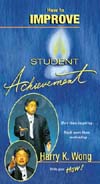
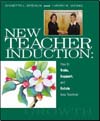
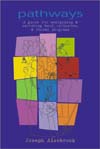


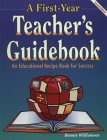
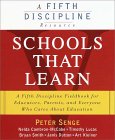

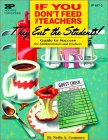
 Effective
Teaching...
Effective
Teaching...